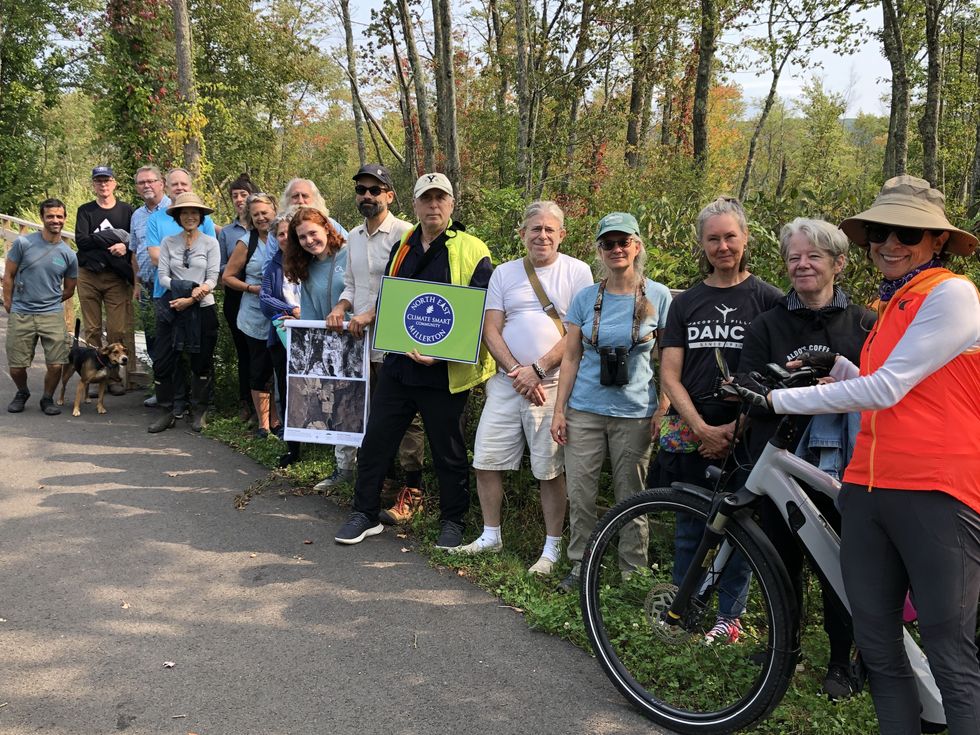MILLERTON — Shedding a light on how the ongoing climate crisis and the record rainfall from Hurricane Ida have impacted local natural resources, Climate Smart Millerton invited residents to learn more about the importance of protecting local wetlands and floodplains with a special Wetlands Weekend on Saturday, Sept. 11, through Sunday, Sept. 12.
The weekend kicked off on Saturday at 4 p.m. with a virtual Zoom workshop, “Wetlands, Floodplains and Global Warming Forum,” moderated by Tom Parrett, editor of the Climate Smart Millerton website. It examined the role wetlands and floodplains play in the local ecosystem and why they should be protected.
The first to speak was Gretchen Stevens, director of Hudsonia’s Biodiversity Resources Center. Stevens said Hudsonia had completed a town-wide habitat map a few years ago with an accompanying report describing the area’s habitats and their ecological importance; the plants and animals of conservation concern; and recommendations for conservation.
Considering how broad the term “wetlands” is, she said there are many kinds of wetlands in northeastern landscapes — fens, vernal pools, wet meadows, marshes and acidic bogs — as well as many subdivisions of those kinds of wetlands.
Local wetlands
Exhibiting a map of the different wetlands found in the Millerton-North East region, she described each wetlands’ characteristics and role as a habitat for wildlife and plant species.
Along with supporting a great variety of animal and plant species, Stevens highlighted the ways in which small and isolated wetlands are every bit as important ecologically as large wetlands and those connected to lakes and streams, from restoring floodwaters and recharging groundwater to exporting organisms to other habitats and retaining and transforming nutrients, metals and other toxins.
However, unlike the larger wetlands, most of the smaller wetlands are unprotected by state and federal laws. If they’re going to be protected, she said it must be done at the local level, whether by local legislation or local landowners.
The importance of floodplains
As watershed conservation director of the Housatonic Valley Association (HVA), Michael Jastremski delivered an overview of the function and ecological services provided by floodplains. Jastremski explained prioritizing floodplain restoration and protection is critical as well as taking action over the actions that can be controlled at the local level to reduce flood risk.
As Dutchess Land Conservancy’s Senior Manager of Stewardship & Education, Julie Hart talked about where wetlands come from, adding land changes over time and talking about what causes those changes. She started with the Ice Age and moved into the 1800s.
Ecosystem services
Talking about why wetlands should be protected, Hart outlined ecosystem services — a term she referred to as “What does the land do for you?” — and the different ways people can think about ecosystem services.
As a visual demonstration of these resources and their place in the local region, community members were invited to take part in a guided wetlands and floodplains walk with Hart the next morning.
Walking along the new section of the Harlem Valley Rail Trail north of Millerton, North East town Supervisor Chris Kennan said the walk drew about 25 people who came to see the wetlands and floodplains in person, understand the role they play in sequestering water and observe how they change when the area receives a big rainfall.








 Submitted
Submitted






